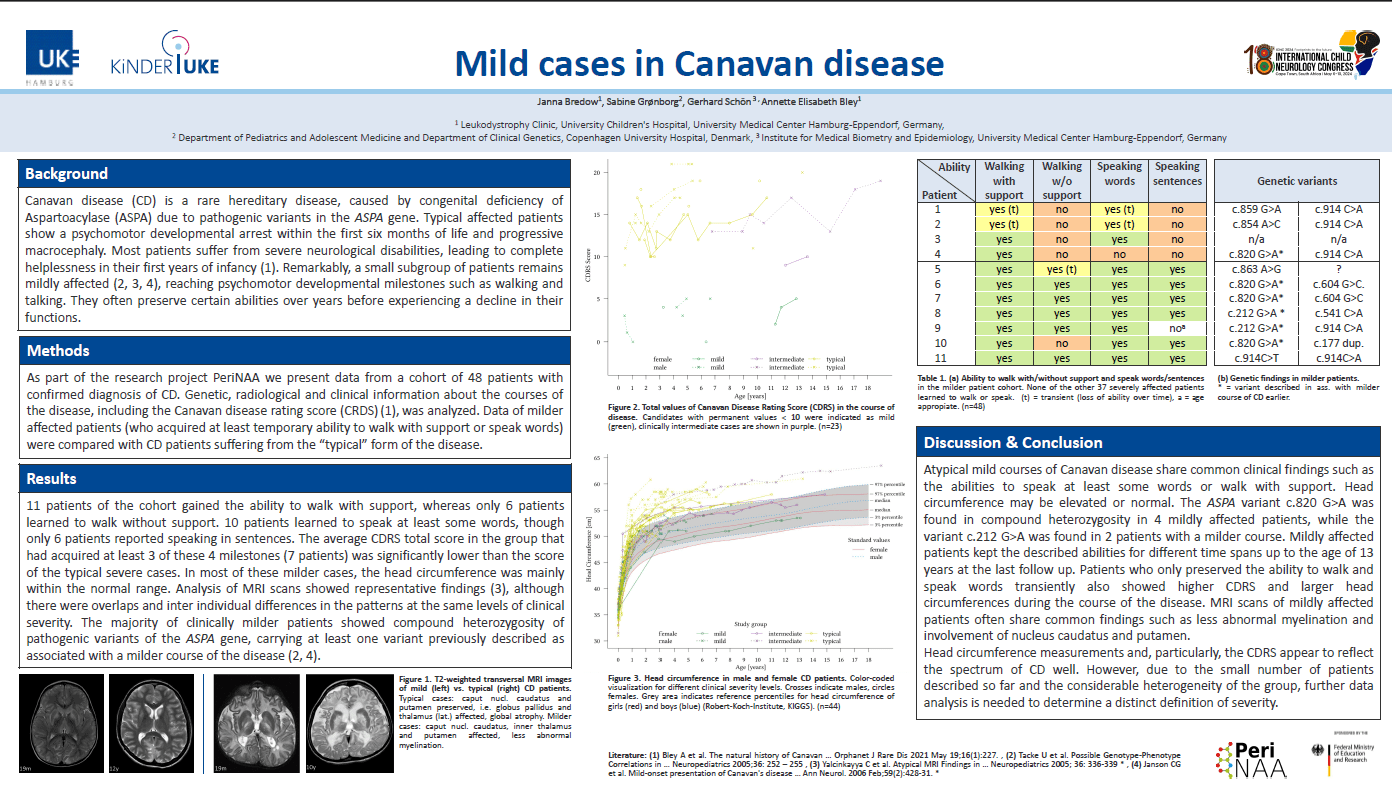Mild Cases In Canavan Disease
Introduction: Canavan disease (CD) is a rare hereditary disease, caused by the congenital deficiency of aspartoacylase due to pathogenic variants in the ASPA gene. Typical affected patients show a psychomotor developmental arrest within the first six months of life and a progressive macrocephaly. Most patients suffer from severe neurological disabilities up to complete helplessness in their first years of infancy. Life expectancy is reduced. Remarkably, a small subgroup of patients remains mildly affected, reaching psychomotor developmental milestones such as walking and talking. They often preserve certain abilities over years before experiencing a decline in their functions. Methods: As part of the research project PeriNAA we present data of seven patients with confirmed diagnosis of CD. Diagnostic and clinical information of the course of the disease was analyzed. Data was compared with CD patients suffering from the “classical type” of the disease. Results: All patients gained the ability to walk and to speak at least words. The majority of patients showed a compound heterozygosity of pathogenic variants of the ASPA gene of which at least one pathogenic variant was associated with a milder course of the disease (c212 G>A or c820 G>A) earlier. Other patients were atypically mildly affected without known specific pathogenic variants. Conclusion: Atypical mild courses of Canavan disease show common clinical findings and seem to be caused by specific pathogenic variants of the ASPA gene.
Janna Bredow
University Medical Center Hamburg-Eppendorf
Germany
Sabine Weller Grønborg
Copenhagen University Hospital
Denmark
Annette E Bley
University Medical Center Hamburg-Eppendorf
Germany

Janna Bredow
University Medical Center Hamburg-Eppendorf
Germany